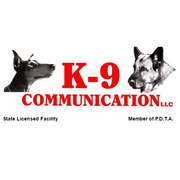
Dog obedience training is an invaluable investment. Not only does it strengthen the bond between you and your pet, but it can also make your lives together much easier. Gus Marnel, a leading K-9 training expert and lecturer on K-9 psychology at the University of New Haven, has been training dogs for over 35 years. At his obedience school, K-9 Communication in Milford, CT, Gus points out how you can apply what’s learned in dog training to everyday situations.
Dog training doesn’t consist of commands like “heel,” “sit,” “stay down,” and “come.” Dogs know how to do these things instinctively. Rather, training involves conditioning your dog to respond to specific sounds with specific behaviors. Over time, you’ll increase the level of difficulty by making more complex commands. You’ll also add distractions into the mix. In the real world, there are a lot of stimuli which can divert your dog’s attention away from you. Through proper training, they’ll learn to focus on you when given a command, regardless of whatever else may be going on around them.
 Learning to read your dog’s body language is a crucial part of training. It helps you communicate with your dog more effectively. Although your dog cannot speak using words, their body movements and expressions can speak volumes. As you observe these cues, you’ll learn what motivates them. You’ll also get to anticipate their behavior in certain situations preemptively. For example, imagine you’re out walking your dog and a child rides by on a bike. If you haven’t learned to read your dog’s body language, you won’t be able to stop your dog from lunging at the child until it’s too late. In training, you’ll develop the skills necessary to observe your dog’s behavior as the bike approaches and act proactively.
Learning to read your dog’s body language is a crucial part of training. It helps you communicate with your dog more effectively. Although your dog cannot speak using words, their body movements and expressions can speak volumes. As you observe these cues, you’ll learn what motivates them. You’ll also get to anticipate their behavior in certain situations preemptively. For example, imagine you’re out walking your dog and a child rides by on a bike. If you haven’t learned to read your dog’s body language, you won’t be able to stop your dog from lunging at the child until it’s too late. In training, you’ll develop the skills necessary to observe your dog’s behavior as the bike approaches and act proactively.
You can also utilize skills you learn in the classroom to train your dog at home, creating a “new normal.” One example is rewarding your dog with belly rubs when they are well-behaved with a guest. Or, if your dog jumps on you in excitement as you try to put on his leash, you’ll hang the leash back up and withhold the walk until he learns to earn the reward. Dogs who are well-trained are calm, have clear expectations, are more respectful to their owner, and follow learned routines. You and your dog can both reap the benefits of their good behavior.
Proper dog training enhances the already present bond between humans and pets, incorporating intuition, connection, and communication. A Master Trainer and graduate of the United States K-9 Academy, Gus has trained thousands of dogs using his tried-and-true, compassionate techniques. Through the K-9 Communication program, Gus even offers a “Lifetime Training Advantage,” which guarantees training that will last your dog’s lifetime. To sign up for a free consultation, visit K-9 Communication online or call (203) 874-7299. You can also find him on Facebook and leave a review on Google +.
About the Business
Have a question? Ask the experts!
Send your question

